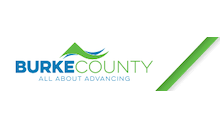Adding Value to Your Calf Crop
go.ncsu.edu/readext?780677
en Español / em Português
El inglés es el idioma de control de esta página. En la medida en que haya algún conflicto entre la traducción al inglés y la traducción, el inglés prevalece.
Al hacer clic en el enlace de traducción se activa un servicio de traducción gratuito para convertir la página al español. Al igual que con cualquier traducción por Internet, la conversión no es sensible al contexto y puede que no traduzca el texto en su significado original. NC State Extension no garantiza la exactitud del texto traducido. Por favor, tenga en cuenta que algunas aplicaciones y/o servicios pueden no funcionar como se espera cuando se traducen.
Português
Inglês é o idioma de controle desta página. Na medida que haja algum conflito entre o texto original em Inglês e a tradução, o Inglês prevalece.
Ao clicar no link de tradução, um serviço gratuito de tradução será ativado para converter a página para o Português. Como em qualquer tradução pela internet, a conversão não é sensivel ao contexto e pode não ocorrer a tradução para o significado orginal. O serviço de Extensão da Carolina do Norte (NC State Extension) não garante a exatidão do texto traduzido. Por favor, observe que algumas funções ou serviços podem não funcionar como esperado após a tradução.
English
English is the controlling language of this page. To the extent there is any conflict between the English text and the translation, English controls.
Clicking on the translation link activates a free translation service to convert the page to Spanish. As with any Internet translation, the conversion is not context-sensitive and may not translate the text to its original meaning. NC State Extension does not guarantee the accuracy of the translated text. Please note that some applications and/or services may not function as expected when translated.
Collapse ▲RADIO TRANSCRIPT
Date: October 19, 2020
Agent: Damon Pollard
This is Damon Pollard, Livestock Agent with the North Carolina Cooperative Extension Service-Burke Center. Today’s topic is Adding Value to Your Calf Crop.
In many ways, adding value means implementing management practices to maximize dollars received for your calves on sale day. Dehorning; castration; adequate frame and muscling; and avoiding body condition extremes at sale time all help add value. Through the use of superior bull and cow genetics;
controlled breeding seasons so that calves sell in larger, more uniform lots, preconditioning; and a complete health program give the opportunity for producer premiums. Other one-time practices that can impact your check might include minimizing presale shrink and optimizing fill in the sale ring. For example, research shows that preconditioned calves entering the feedlot will have lower morbidity and mortality, gain faster with greater feed efficiency and finish in less days on feed with a lower total cost of gain. One study showed a $55 per head advantage for preconditioned calves by the end of the feeding period.
While your calves are in the ring, buyers visually appraise them, determine their value and place a bid, based on their estimate of how your calves will perform in the next phase of production. It is a good idea for producers to document their value-added management practices and provide this information to buyers on sale day. A buyer may share part of that future value with you in the form of a premium, but it will never equal the full value of the management and expertise represented in your calves.
This is Damon Pollard, Livestock Agent with the North Carolina Cooperative Extension Service-Burke
Center.




